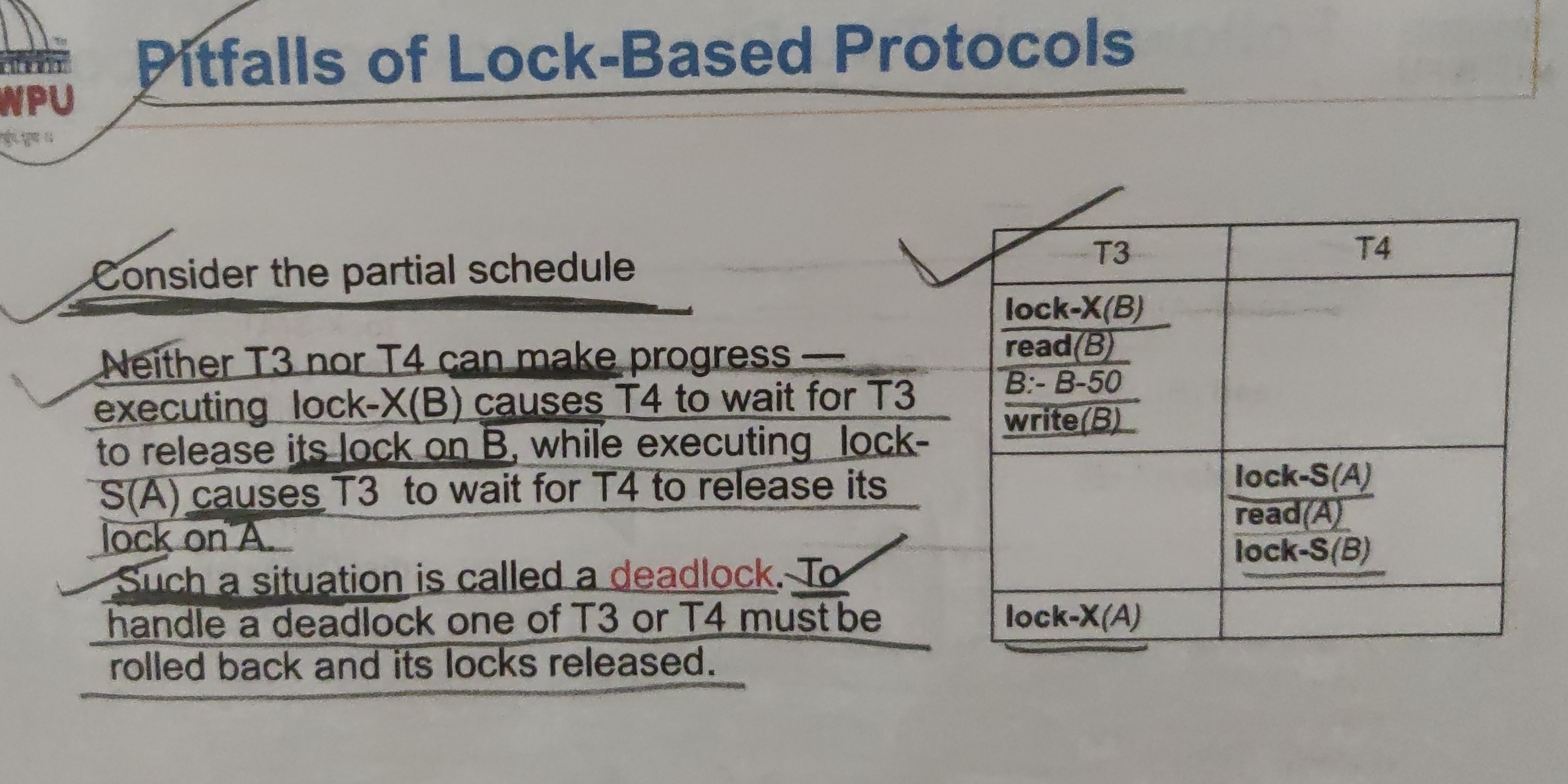Consider the partial schedule. Neither T3 nor T4 can make progress. Executing lock-X(B) causes T4 to wait for T3 to release its lock on B, while executing lock-S(A) causes T3 to wa... Consider the partial schedule. Neither T3 nor T4 can make progress. Executing lock-X(B) causes T4 to wait for T3 to release its lock on B, while executing lock-S(A) causes T3 to wait for T4 to release its lock on A. Such a situation is called a deadlock. To handle a deadlock one of T3 or T4 must be rolled back and its locks released.

Understand the Problem
The question describes a situation involving two transactions (T3 and T4) that are in a deadlock due to their locking mechanisms. It's asking us to consider this partial schedule and understand the implications of the deadlock situation.
Answer
Deadlock
The final answer is deadlock.
Answer for screen readers
The final answer is deadlock.
More Information
A deadlock occurs when two or more transactions are waiting indefinitely for each other to release locks. Rolling back one transaction is a common strategy to resolve it.
Tips
One common mistake is not identifying which transaction should be rolled back. Choose the one with the least amount of progress or the fewest rollback costs.
Sources
- Deadlock Handling - web.cs.ucla.edu
- Introduction To Relational Database Systems - cs.purdue.edu
- Chapter 14: Concurrency Control - ssyu.im.ncnu.edu.tw
AI-generated content may contain errors. Please verify critical information